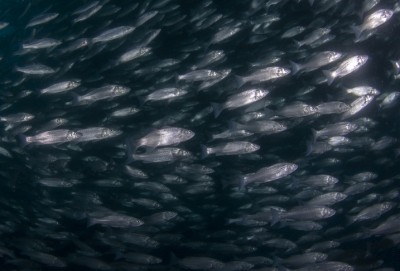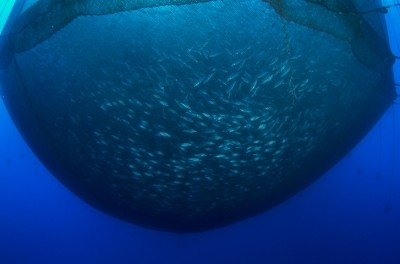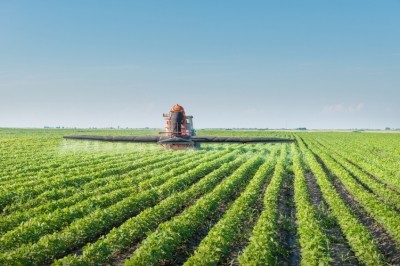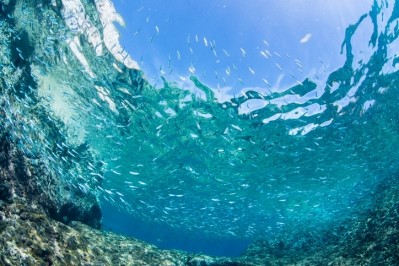Algae meals may support growth, body condition in carnivorous fish
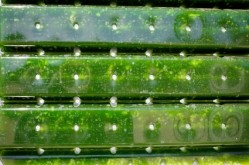
A team of international researchers from Mexico, Texas and Hawaii examined the use of microalgae meals as partial replacements for fish oil (FO), fishmeal (FM) and soy protein concentrate (SPC) in the diet of farmed, carnivorous fish. The group published its work in the journal Aquaculture.
“In the present study, the use of the heterotroph S. limacinum and the autotroph Arthrospira sp. in diets for juvenile red drum was evaluated,” the researchers said.
The alternative diets were able to support fish growth performance, body condition and feed use, said the researchers. “Results indicate that S. limacinum meal can be used as the chief source of lipid for complete FO [fish oil] replacement,” they added.
“In terms of absolute inclusion levels of the microalgae meals, the diet with the highest level of FM/FO replacement (50%) contained 28.87% Arthrospira sp. and 6.72% S. limacinum meals (35.59% altogether),” they said. “While this is already a considerable level of incorporation of algal meals in diets for a carnivorous fish, there seems to be scope for further FM-FO replacement in the diet of red drum.”
Why fishmeal alternatives?
Fishmeal and fish oil have been commonly used in aquafeeds as they provide needed nutritional elements including a high protein content, good amino acid balance and a fatty acid profile that has long-chain polyunsaturated fatty acids (LC-PUFA), the researchers said.
However, high demand for the feed ingredients and depletion of global fish stocks is increasing the price of both fishmeal and fish oil, they said. The ingredients have become a constraint for the future development of aquaculture.
Alternative feed ingredients with adequate amino acids balances or levels of LC-PUFA have been examined for inclusion in aquafeed. Some of the ingredients tried include soybean and corn protein concentrates, which have been used with differing levels of success as plant proteins may have imbalanced amino acid profiles or little LC-PUFA.
Microalgae meals may offer another alternative as they tend to have high levels of protein or amounts of LC-PUFA and sometimes both, they said. “Used for the production of biodiesel, microalgal oils, along with the resulting algal lipid-extracted by-products, have become more readily available,” they added.
Whole microalgae ingredient may offer more for aquafeeds from a cost perspective as they provide both protein and lipid, said the researchers. The potential feed ingredients also may be more environmentally sustainable than fishmeal and fish oil.
“To date, lipid concentrates or meals derived from autotrophic microalgae genera, such as Arthrospira sp., Isochrysis sp., Nannochloropsis sp., Tetraselmis sp., Nannofrustulum sp., and Desmochloris sp., among others, have experimentally been incorporated into balanced feeds for fish species, with variable, but promising results,” they said.
Some previous studies with red drum have seen a successful replacement of 10% fishmeal and soy protein concentrate using lipid-extracted or whole algal meals from the autotropic Navicula sp., Nannochloropsis sp., and Chlorella sp, they said. But, meals generated from heterotrophic and other types of autotrophic microalgae has not been explored.
Methods and materials
In the feeding trial, juvenile red drum were given one of five experimental diets where a varying amount of fish meal (FM), fish oil (FO) and soy protein concentrate (SPC) were replaced with alternative ingredients, said the researchers. Experimental diets were supplemented with lysine, methionine and taurine to match levels in the control diet.
The control diet included 40% crude protein and 10% crude fat, they said. The five trial diets replaced FM, FO and SPC at 10%, 20%, 30%, 40% and 50% with a combination of Arthrospira sp. and thraustochytrid Schizochytrium limacinum. A sixth diet replaced FO entirely with S. limacinum meal.
Fish were weighed on a weekly basis and were evaluated for growth performance and body condition, they said. Weight gain, percent weight gain, thermal growth coefficient (TGC), Fulton’s condition factor (K), the hepatosomatic index (HSI), intraperitoneal fat ratio (IPF%), muscle ratio, the feed efficiency ratio (FER) and protein retention were calculated.
Sample fish were collected at the end of the study to establish proximate composition for crude protein (CP), crude fat (CF), moisture and ash, they said. Fatty acids also were identified.
Results
Fish given the trial diets had similar growth performance to those on the control diet, although fish getting the 50% replacement diet tended to be heavier, the researchers said. Body condition scores and feed efficiency also was similar.
“Results of the present study indicate that up to 50% of dietary FM, SPC, and FO can be replaced by Arthrospira sp. and S. limacinum meals without compromising fish performance,” they said. “In addition, S. limacinum meal can be used as the chief source of lipid for this species.”
When all of the fish oil was replaced with S. limacinum meal no differences were found for any of the growth performance, body condition or feed use scores, they said.
However, in muscle tissue, fish getting any of the replacement diets tended to have higher CF contents than the control group fish, they said. For fish getting the fish oil-free diet, CF was higher in the control.
There also were some differences found for levels of fatty acids identified in the fish, but not when only the muscle tissue was examined, said the researchers. “As FM, SPC and FO were replaced by the Arthrospira sp. and S. limacinum meals, 16:0 and 22:6n − 3 gradually increased until levels of 41.79 and 9.50%, respectively, were reached in the 50% replacement diet, while other fatty acids, such as 18:1n − 9, 18:1n − 5, and 20:5n − 3, decreased,” they added.
Source: Aquaculture
Title: Partial replacement of fishmeal and fish oil by algal meals in diets of red drum Sciaenops ocellatus
Authors: Martin Perez-Velazquez, D. Gatlin, Mayra González-Félix, Armando García-Ortega
DOI: doi.org/10.1016/j.aquaculture.2018.01.001
